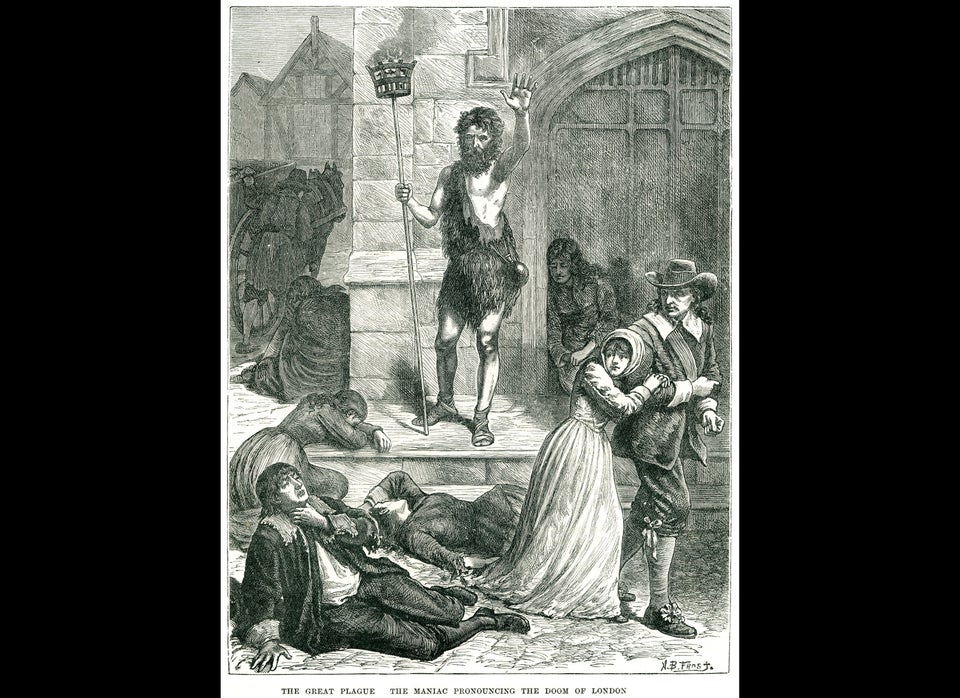By Katherine Harmon(Click here for the original article)
In five years, Black Death wiped out an estimated 30 to 50 percent of Europe's population. This medieval plague was caused by the bacterium Yersinia pestis, which still circulates among humans. Genetic clues as to what might have made it so deadly, however, had remained interred with the tens of millions of victims.
After careful extraction of genetic material from victims' teeth, a team of researchers has sequenced 99 percent of the Plague's genome—the first whole-genome reconstruction of a disease from skeletal remains. The draft genome is described online October 12 in Nature. (Scientific American is part of Nature Publishing Group.)
The 660-year-old plague DNA was isolated from four victims, who had been exhumed from London's East Smithfield Cemetery in the 1980s by the Museum of London Archaeology. To get samples from the skeletal remains, physical anthropologist Kristen Bos of McMaster University in Ontario and a colleague found themselves "wiggling the teeth out of the skulls at the Museum of London," she said in a Tuesday press briefing about the new study.
After carefully extracting genetic material from the inner pulp chamber of the teeth (so as not to damage their exteriors), the team created what Bos called a genetic "fishing rod," baited with molecules from modern-day Y. pestis. With that as a lure, "we were able to essentially fish out the small preserved fragments of Yersinia pestis DNA" and separate it from the stew of human, bacterial and other genetic material that had accumulated during centuries in the soil. (The team described the actual method, which uses high-throughput DNA sequencing and microRNA enrichment, in an August Proceedings of the National Academy of Sciences paper.)
The genome now gives researchers a sort of "fossil" to start to map out the bacterium's phylogenetic tree. They discovered that the Black Death that devastated Europe between 1347 and 1350 was likely close to the common ancestor of all extant Y. pestis strains, (which likely arose—from the soil bacterium Yersinia pseudotuberculosis—between 1200 and 1340).
If this was "the first big pandemic with disseminated Yersinia pestis in humans," as Johannes Krause, of the University of Tübingen's Institute for Archaeological Sciences, asserted at the briefing, then previous plagues, such as the sixth-century Plague of Justinian, were either caused by a completely different pathogen or by a strain of Y. pestis that proceeded to go completely extinct.
The new family tree can also help researchers examine related groups, such as the types of plagues that currently affect only rodents (such as Microtus strains and those that have been found in Chinese marmots)—and what genetic changes might need to occur to allow them to infect humans.
The sequenced strain has some 4.7 million base pairs. When compared with the modern version (based on 17 different genomes), there are just 90 genetic substitutions. That such few genetic changes occurred over the years, Krause said, was "really surprising."
Among these changes, none obviously explains ancient Black Death's virulence, Hendrik Poinar, also of McMaster, said during Tuesday's prepublication briefing. "There's no particular smoking gun."
So if the slight genetic differences in the disease were not responsible for its drastic change, what did make it so deadly in the 14th century that, as Bos described it, "people honestly thought it was the end of the world"?
Much of the mortality might be explained by situational factors, Poinar explained. Cooler climatic conditions and an excess of rain had led to failed crop harvests and widespread hunger, in addition to large numbers of people living in crowded—and already pathogen-filled—medieval cities. "You probably had an immunocompromised population, living under very stressful conditions," Pointer said. Add to that a "population being hit by Y. pestis maybe for the first time," and "Black Death was the perfect storm."
Humans have also adapted to the disease. The global population has likely built up some immunity from centuries of exposure to the pathogen. And even before the modern era, virulence was likely quelled by cultural adaptations, Krause noted. During the first outbreak, no one knew what kind of disease it was nor how to treat it, he said. During subsequent outbreaks, however, "people had already developed some kinds of adaptations—they had developed quarantines, they had developed first aid to treat patients with the symptoms."
And in the meantime, we have developed even more sophisticated surveillance and treatment options, Poinar pointed out. So even if a strain of Y. pestis were to acquire a new batch of mutations, it would still likely be no match for contemporary antibiotics. But that doesn't mean we're in the clear, he added. With increased global interaction and more climatic changes on the way, "that will, of course, lead to other zoonotic events where viruses or bacteria can transfer from animals or hosts into the human population," Poinar said.
For more on old-time diseases, click through this slideshow from The Huffington Post:
